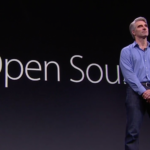OpenAI, supported by Microsoft, has finalized a transaction valuing the AI firm at over $80 billion, according to a New York Times report on Friday, which referenced several informed sources. This development probably made a lot of new millionaires along the way.
The deal involves the sale of existing shares through a tender offer spearheaded by Thrive Capital, allowing employees the opportunity to sell their company shares. This approach differs from a conventional funding round that typically aims to generate capital for the company’s operations, the report elaborated.
OpenAI was involved in a similar investor deal last year with VC firms Thrive Capital, Sequoia Capital, Andreessen Horowitz, and K2 Global. The firms agreed to buy shares in the company in a tender offer, which boosted OpenAI’s valuation to $29 billion in early 2023. The AI startup gained significant funding from its biggest investor Microsoft in January 2023 worth $10 billion. Microsoft has previously invested in OpenAI during 2019 and 2021.
In approximately one year, the value has surged threefold, boasting an annual revenue of around $2 billion. This remarkable growth translates into a market capitalization that is an impressive 40 times the annual earnings. Both OpenAI and Thrive Capital have opted not to comment on the details of this latest agreement.
The aim behind initiating the tender offer is to furnish employees with liquidity for their shares, a significant consideration for those in privately held companies where share sale opportunities are scarce.
This opportunity typically comes with a set time frame and is optional for employees to engage in. The rationale for such offers can vary; however, it appears OpenAI’s intent is to enable its workforce to capitalize on the appreciated value of their shareholdings.
Sora AI Model
OpenAI has recently unveiled its diffusion-based text-to-video AI model Sora, which is capable of making minute-long 1080p videos in stunning quality. It can generate photorealistic videos using text, images, or even video input. It is currently only available to testers, but will eventually roll out to developers and enterprise customers. It may also become a part of ChatGPT’s paid tiers soon.






